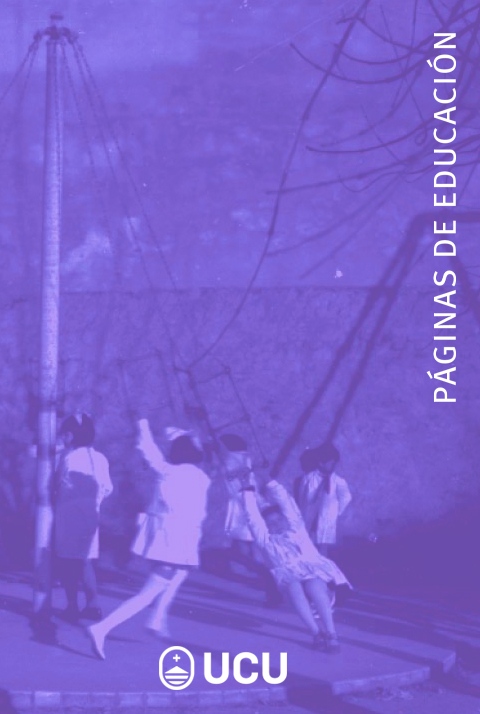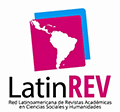Cultural narratives during EFL/ESL lessons: an epistemological perspective for intercultural projects
DOI:
https://doi.org/10.22235/pe.v15i2.3050Abstract
Cultures are present in everything we do; cultural contacts are constant and different cultural aspects arise during English as a foreign or second language lessons (EFL/ESL). As intercultural activities and projects are common during these lessons, and issues concerning how we perceive cultures emerge in discourses that take place in them, philosophical-based research to analyse which epistemological approaches may offer valid, realistic, and humanistic interpretations of cultures was carried out. As different notions of culture exist, the ones considered within liberal democracies were studied and Seyla Benhabib’s (2002) notion of cultural narratives became the focus of the analysis. It was concluded that although a perspective based on cultural narratives cannot be considered the only valid one, it is suitable for EFL/ESL lessons as it is an open view which considers both individual and social aspects, while questioning stereotyped visions. The article provides examples on how an approach based on cultural narratives may provide theoretical support for the implementation of intercultural projects.
Downloads
References
Arendt, H. (1958). The Human Condition. The University of Chicago Press.
Austin, P. (2000). Literary pen-pals: Correspondence about books between university students and elementary students. Reading Horizons, (40), 273-291. https://scholarworks.wmich.edu/reading_horizons/vol40/iss4/4
Barksdale, M. A., Watson, C., & Soo Park, E. (2007). Pen Pal Letter Exchanges: Taking First Steps Toward Developing Cultural Understandings. The Reading Teacher, 61(1), 58-68. https://doi.org/10.1598/RT.61.1.6
Bhabha, H. K. (1994). The location of culture. Routledge.
Baker, W. (2012). From cultural awareness to intercultural awareness: culture in ELT. ELT Journal, 66(1), 62-70. https://doi.org/10.1093/elt/ccr017
Benhabib, S. (Ed.). (1996). Democracy and Difference: Contesting the boundaries of the political. Princeton.
Benhabib, S. (2002). The claims of culture. Equality and Diversity in the Global Era. Princeton University Press.
Benhabib, S. (2011). The Rights of Others, Aliens, Residents and Citizens (9th ed). Cambridge University Press.
Blommaert, J. (2010). The sociolinguistics of globalization. Cambridge University Press.
Canale, G. (2009). Globalización y lenguas internacionales. Identidades, discursos y políticas lingüísticas. El caso del inglés, el español y el esperanto. CSIC-FHCE-Universidad de la República.
Carabelli, P. (2012). El interculturalismo en educación: reflexiones desde el aula de inglés. En L. Masello (Dir.), Lenguas en la región. Enseñanza e investigación para la integración desde la universidad (pp. 19-30). FHCE-Universidad de la República.
Carabelli, P. (2022). Las narrativas culturales. Más allá de los estereotipos. Biblos.
Coupland, N. (2003). Sociolinguistics and globalization. Journal of Sociolinguistics, 7(4), 465-472. https://doi.org/10.1111/j.1467-9841.2003.00237.x
Crystal, D. (2008). Two thousand million? English Today, 24(1), 3-6.
Dewey, M. (2007). English as a lingua franca and globalization: an interconnected perspective. International Journal of Applied Linguistics, 17(3), 332-354. https://doi.org/10.1111/j.1473-4192.2007.00177.x
Farrow, S. (2005). The language myth revisited. Language and communication, (25), 19-25. https://doi.org/10.1016/j.langcom.2004.05.001
Habermas, J. (1987). Teoría de la acción comunicativa. Taurus. (Obra original publicada en 1981)
Holliday, A. (2018). Understanding intercultural communication: Negotiating a grammar of culture (2nd ed.). Routledge.
Jenkins, J. (2002). A sociolinguistically based, empirically researched pronunciation syllabus for English as an international language. Applied Linguistics, 23(1), 83-103. https://doi.org/10.1093/applin/23.1.83
Jenkins, J. (2018). Trouble with English? En M. Kelly (Ed.), Languages after Brexit. How the UK Speaks to the World (pp. 25-33). Palgrave Macmillan.
Kelly, M. (2018). Why Are Many People Resistant to Other Languages? En M. Kelly (Ed.), Languages after Brexit. How the UK Speaks to the World (pp. 13-24). Palgrave Macmillan.
Kirkpatrick, A. (2007). World Englishes: Implications for international communication and English language teaching. Cambridge University Press.
Kymlicka, W. (1995). Multicultural Citizenship. A liberal theory of minority rights. Clarendon Press.
Lévi-Strauss, C. (1978). Myth and Meaning. Schocken Books.
Lévi-Strauss, C. (1985). Las estructuras elementales del parentesco. Planeta. (Obra original publicada en 1955)
Malinowski, B. (1972). Los argonautas del pacífico occidental. Planeta-Agostini.
McKay, S., & Bokhorst-Heng, W.D. (2008). International English in Its Sociolinguistic Contexts. Towards a Socially Sensitive EIL Pedagogy. Routledge.
Murdock, G. (1945). The Common Denominator of Culture. En R. Linton (Ed.), The Science of Man in the World Crisis (pp. 123-142). Columbia University Press.
Rawls, J. (1971). Theory of Justice. Harvard University Press.
Seidlhofer, B. (2011). Understanding English as a Lingua Franca. Oxford University Press.
Taylor, C. (1989). Sources of the Self: The Making of the Modern Identity. Harvard University Press.
Taylor, C. (1994). Multiculturalism: examining the politics of recognition. En A. Gutman (Ed.), Multiculturalism: examining the politics of recognition (pp. 25-73). Princeton University Press.
Thompson McMillon, G. M. (2009). Pen Pals Without Borders: A Cultural Exchange of Teaching and Learning. Education and Urban Society, 42(1), 119-135. https://doi.org/10.1177%2F0013124509336066
Downloads
Published
How to Cite
Issue
Section
License
Copyright (c) 2022 Páginas de Educación

This work is licensed under a Creative Commons Attribution 4.0 International License.















